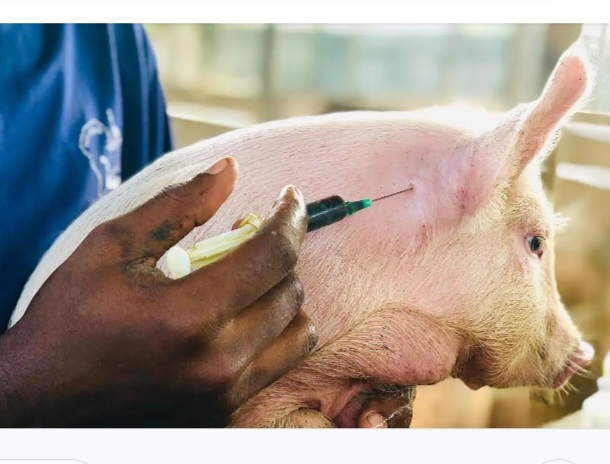

Iron injections or iron dextran shots are usually administered to piglets between the first and seventh day of birth. This corrects the development of iron deficiency in piglets, which results in anaemia. Piglets are usually born with low iron reserves and the sows’ milk unfortunately is low in iron. During pregnancy, some sows or gilts become deficient in Vitamin E and/or selenium (which aids in preventing iron toxicity). This results in the birth of piglets deficient in Vitamin E and Selenium and it subsequently poses a threat for such piglets who receive iron injections. The enzymes which metabolise the iron cannot function leading to the accumulation and subsequent toxicity of iron in the body.
Clinical signs
- The affected piglet is lame with dark swelling around injection site. About 50% or more of the litter die within a few hours.
Treatment


- Whilst inferior quality iron dextran poses a threat to piglets, deficiency of selenium and vitamin E is a major concern.
- Once vitamin E or selenium deficiency has been diagnosed, piglets should be injected with vitamin E/selenium according to the manufacturer’s recommendations.
- Sows within the last month of pregnancy should be injected with vitamin E. At least two weeks before farrowing.
Control and Prevention
- Excessive oxidation of feed as a result of poor storage of cereals, or the accumulation of moisture in feed troughs which have not been cleaned out is the most common cause of low vitamin E status.
- Always check the sources and storage facilities of all feed grains and ensure feed troughs are regularly cleaned out

